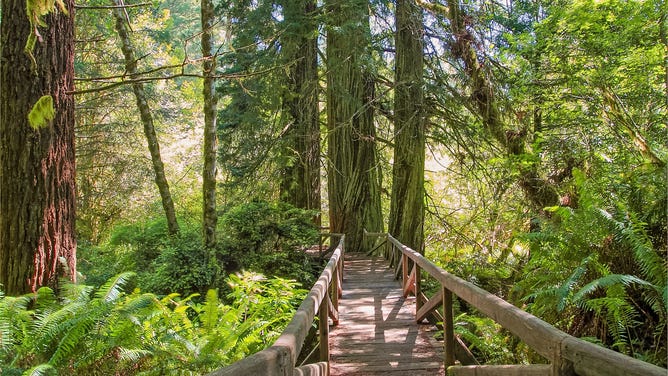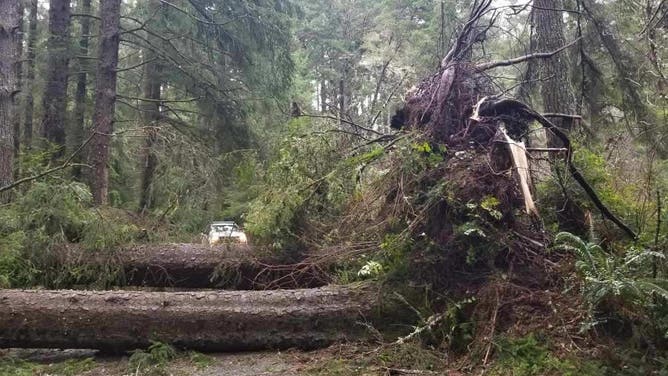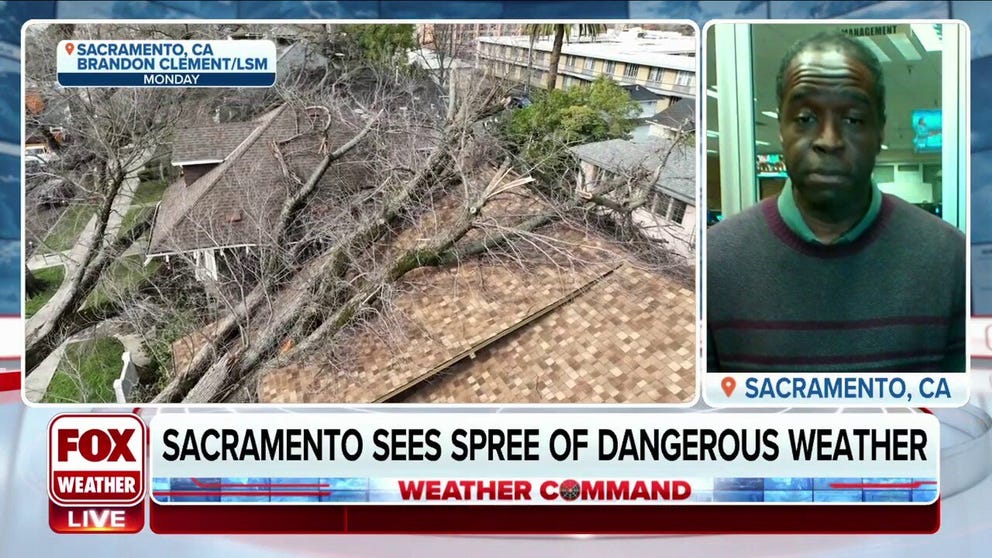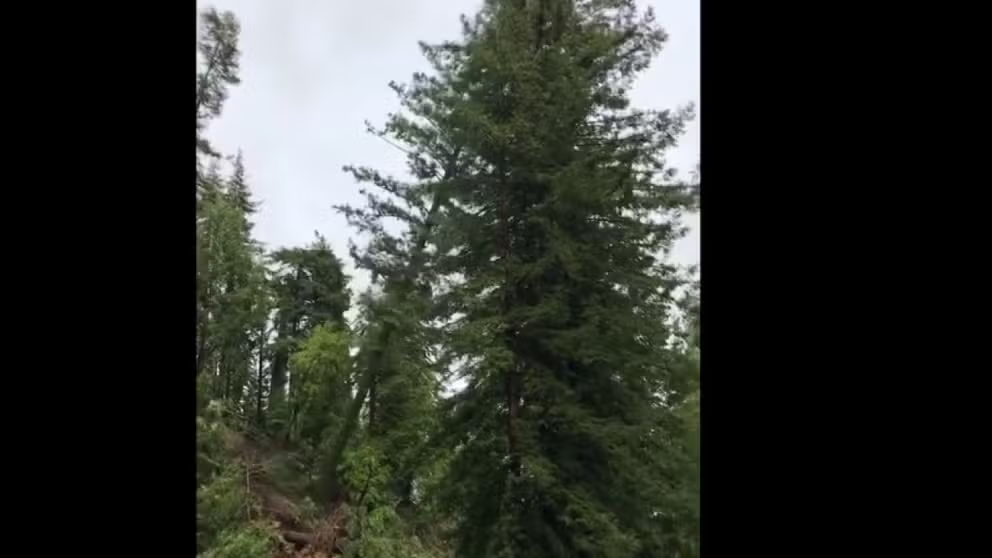State of redwoods remains uncertain after historic storms in California
Atmospheric river storms drenched parts of the Golden State, causing mudslides and fallen trees. The trees at Redwoods National and State Parks, however, were mostly spared.
Downed trees, flooding causing a lot of problems across Sacramento
Matt Robinson, Sacramento County Public Information Officer, provides an update on damages and flooding across the region.
The mighty redwood trees are an iconic part of California. However, after historic storms slammed the Golden State over the past week, the condition of the trees remains to be seen.
Multiple rounds of storms drenched parts of California as a recent series of atmospheric rivers brought heavy rain and caused dangerous flash flooding.
CALIFORNIA SCENES SHOW DEVASTATION FROM FLOODING, SINKHOLES AMID BARRAGE OF ATMOSPHERIC RIVERS
The excessive amounts of precipitation destabilized the soil in some areas, leading to sinkholes, mudslides and felled trees.
California State Parks

FILE - Prairie Creek Trail Foot Bridge in Prairie Creek Redwoods State Park.
(NPS Photo / Steve Olson)
Redwoods are known as the world's tallest trees, growing all across California State Parks.
Their condition after the recent storms is currently uncertain as State Parks does not yet have a full assessment of the storm impacts, according to California State Parks spokesperson Adeline Yee.
Yee noted the vulnerable nature of "old-growth" redwoods, which are the larger, older trees in the parks. The size and weight of their trunks and branches make the old-growth trees more likely to fall.
"Modern tools, such as types of remote sensing, may allow land managers to better assess the situation after the storms," she said.
Water-logged Douglas Fir trees slid off mountainside
A PG&E linemen recorded this video in the Santa Cruz Mountains along Highway 9 just north of Santa Cruz, showing a mature Douglas Fir tree’s roots loosened and gave way as a mudslide cascaded down a mountainside and onto the road. (Video Credit: PG & E/WEATHER TRAKER /TMX)
The California State Parks department has received reports that several park units have experienced downed trees, flooding and power outages. As of Wednesday morning, State Parks had completely closed 54 park units and partially closed 38.
WATCH A LANDSLIDE: BOULDERS TUMBLE DOWN A CALIFORNIA FREEWAY
Here are some examples of storm damages and impacts in the State Parks, according to Yee:
- Central Coast – Seacliff State Beach: Half the pier collapsed into the ocean, and campgrounds were washed away. This park unit sustained major infrastructural damage.
- Monterey Area – Pfeiffer Big Sur State Park: A tree fell on Pfeiffer Bridge. This bridge is on Pfeiffer Falls Trail and had just been newly renovated and reopened to the public in June 2021.
- North Coast – Prairie Creek Redwoods State Park Richardson Grove State Park and Standish-Hickey State Recreation Area: These park units are temporarily fully closed due to significant tree damage and power outages, along with more potential flooding.
- Santa Barbara area – Carpinteria State Beach, Chumash Painted Cave State Historic Park, El Capitan State Beach, El Presidio de Santa Barbara State Historic Park, Emma Wood State Beach, La Purísima Mission State Historic Park, Gaviota State Park, Refugio State Beach: These park units are temporarily fully closed due to an evacuation order from Santa Barbara County, flooding and/or high surf and debris washing ashore.
- Southern California – Bolsa Chica State Beach: This park unit is temporarily fully closed as the parking lots, park road, and multi-use trail have seen flooding and debris from high tide and large surf.
More information can be found on the California State Parks website.
Redwoods National and State Parks
The trees at Redwoods National and State Parks in northern California, however, were mostly spared from the storms as the storms were not as severe in that part of the state.
NPS did report power outages through the parks, and that some trees had fallen on roadways.

A tree that fell in Redwoods National and State Parks in northern California on January 6, 2023.
(CDPR / Redwoods National and State Parks / FOX Weather)
The majority of the trees that have fallen are not the old-growth redwoods that the parks are famous for, according to Patrick Taylor, the interpretation and education program manager at Redwoods National and State Parks.
Rather, many of the damaged trees are "second-growth" redwoods or other species, which are younger as they were planted about 100-150 years ago. For comparison, the average age of Coast Redwood trees in the park is between 800 and 1,500 years old, according to NPS.

FILE - Old-growth redwoods
(NPS Photo / Shaina Niehans)
"Broadly speaking, the trees have been here for millions of years," Taylor said. "They're pretty well adapted to the extreme weather that we're having right now."
According to Taylor, one of those adaptations is that their roots grow in a network with other redwoods. Despite the root systems only being about 10 feet deep, their connections give the trees a strong footing.
"They have this lattice network where each tree is helping hold and support the trees around it," Taylor said. "The trees tend to help anchor each other in place."

FILE - West Ridge Trail in Redwoods National and State Parks.
(NPS / S. Niehans)
Another adaptation is that the old-growth redwoods tend to drop their bigger branches, even from 200 to 300 feet in the air. This allows the trees to become more aerodynamic and resistant to powerful winds.
Taylor said that due to the wind advisory in current weather forecasts, his team in the northern national and state parks will wait to conduct fuller surveys until after the wind advisory has passed as a safety precaution.

